-
 Bitcoin
Bitcoin $85,432.9288
1.79% -
 Ethereum
Ethereum $1,649.6917
4.88% -
 Tether USDt
Tether USDt $0.9998
0.02% -
 XRP
XRP $2.1536
5.14% -
 BNB
BNB $597.8131
1.68% -
 Solana
Solana $131.9809
8.56% -
 USDC
USDC $0.9998
-0.02% -
 Dogecoin
Dogecoin $0.1673
4.09% -
 TRON
TRON $0.2464
1.29% -
 Cardano
Cardano $0.6584
4.54% -
 Chainlink
Chainlink $13.1780
3.20% -
 UNUS SED LEO
UNUS SED LEO $9.3148
-0.92% -
 Avalanche
Avalanche $20.3113
5.55% -
 Sui
Sui $2.3682
6.16% -
 Toncoin
Toncoin $3.0573
2.57% -
 Stellar
Stellar $0.2446
3.67% -
 Shiba Inu
Shiba Inu $0.0...01255
2.22% -
 Hedera
Hedera $0.1736
2.64% -
 Bitcoin Cash
Bitcoin Cash $350.1162
12.19% -
 MANTRA
MANTRA $6.2518
-2.41% -
 Litecoin
Litecoin $79.0634
2.95% -
 Polkadot
Polkadot $3.7139
4.02% -
 Hyperliquid
Hyperliquid $16.5232
3.77% -
 Dai
Dai $1.0002
0.01% -
 Bitget Token
Bitget Token $4.4055
1.69% -
 Ethena USDe
Ethena USDe $0.9991
0.04% -
 Pi
Pi $0.7248
18.16% -
 Monero
Monero $206.8837
1.39% -
 Uniswap
Uniswap $5.5444
5.09% -
 OKB
OKB $53.8997
0.95%
What is the essential difference between NFT and Bitcoin?
Bitcoin serves as a digital currency and store of value, while NFTs represent unique digital assets, often used in art and collectibles.
Apr 11, 2025 at 12:14 pm

The world of cryptocurrencies and digital assets has seen significant growth and diversification over the years, with Bitcoin and Non-Fungible Tokens (NFTs) being two of the most talked-about innovations. While both fall under the broader umbrella of blockchain technology, they serve different purposes and have distinct characteristics. This article will delve into the essential differences between NFT and Bitcoin, providing a comprehensive understanding of each.
What is Bitcoin?
Bitcoin, launched in 2009, is the first and most well-known cryptocurrency. It operates on a decentralized network using blockchain technology, which is a distributed ledger that records all transactions across a network of computers. Bitcoin's primary function is to serve as a digital currency, allowing users to send and receive payments without the need for intermediaries like banks.
The value of Bitcoin is determined by supply and demand in the market. It is designed to have a limited supply, with a maximum of 21 million bitcoins that can ever be mined. This scarcity is intended to mimic the properties of gold, making Bitcoin a potential store of value and a hedge against inflation.
What is an NFT?
Non-Fungible Tokens, or NFTs, are unique digital assets that represent ownership or proof of authenticity of a specific item or piece of content. Unlike Bitcoin, which is fungible (each unit is interchangeable with another), NFTs are unique and cannot be exchanged on a one-to-one basis. They are typically used to represent digital art, collectibles, music, and other forms of creative work.
NFTs are built on blockchain technology, often using the Ethereum network, which allows for the creation of smart contracts. These smart contracts ensure that the ownership and transfer of NFTs are recorded transparently and securely on the blockchain.
Key Differences in Functionality
The most fundamental difference between Bitcoin and NFTs lies in their functionality. Bitcoin is designed to be a currency and a store of value, while NFTs are used to represent ownership of unique digital assets. This distinction affects how they are used and traded in the market.
Bitcoin transactions involve transferring a certain amount of the cryptocurrency from one wallet to another. The value of the transaction is determined by the current market price of Bitcoin. In contrast, NFT transactions involve the transfer of ownership of a specific digital asset. The value of an NFT is often determined by its perceived rarity, the reputation of the creator, and the demand for the specific item.
Differences in Technology
Both Bitcoin and NFTs utilize blockchain technology, but they do so in different ways. Bitcoin uses a blockchain to record transactions and maintain the integrity of the network. The Bitcoin blockchain is designed to be secure and decentralized, with miners competing to validate transactions and add them to the blockchain.
NFTs, on the other hand, often use the Ethereum blockchain, which supports the creation of smart contracts. These smart contracts are essential for NFTs, as they define the rules for ownership and transfer of the digital asset. The Ethereum blockchain allows for more complex interactions and functionalities compared to the Bitcoin blockchain, which is primarily focused on financial transactions.
Market Dynamics and Use Cases
The market dynamics for Bitcoin and NFTs are also quite different. Bitcoin is traded on cryptocurrency exchanges and is often used as a speculative investment or a means of payment. Its value can fluctuate significantly based on market sentiment, economic factors, and regulatory news.
NFTs, on the other hand, are typically bought and sold on specialized marketplaces like OpenSea, Rarible, and Nifty Gateway. The value of an NFT is often driven by its uniqueness and the demand for the specific digital asset. NFTs have gained popularity in the art world, with artists and collectors using them to buy, sell, and trade digital art and other collectibles.
Ownership and Scarcity
Another key difference between Bitcoin and NFTs is the concept of ownership and scarcity. Bitcoin is designed to be scarce, with a fixed supply that cannot be altered. This scarcity is intended to drive its value over time. However, each Bitcoin is interchangeable with another, meaning that ownership of one Bitcoin is the same as ownership of any other Bitcoin.
In contrast, NFTs are inherently unique, with each token representing a specific digital asset. This uniqueness means that owning an NFT is akin to owning a piece of art or a collectible. The scarcity of an NFT is determined by the creator, who can decide how many copies of the digital asset to mint. This ability to control scarcity adds another layer of value to NFTs.
Legal and Regulatory Considerations
The legal and regulatory landscape for Bitcoin and NFTs is still evolving. Bitcoin is often treated as a commodity or a digital asset by regulators, with varying degrees of acceptance and regulation around the world. Some countries have embraced Bitcoin as a legitimate form of payment, while others have imposed strict regulations or outright bans.
NFTs, being a newer and more complex form of digital asset, face different regulatory challenges. The ownership and transfer of NFTs are governed by smart contracts, which can raise legal questions about intellectual property rights and the enforceability of these contracts. Additionally, the use of NFTs in the art world has led to discussions about copyright, royalties, and the rights of creators and buyers.
Frequently Asked Questions
Q: Can Bitcoin be used to buy NFTs?
A: Yes, Bitcoin can be used to buy NFTs, but it is not the most common method. Most NFT marketplaces operate on the Ethereum blockchain and accept Ethereum (ETH) as the primary currency for transactions. However, some platforms may allow users to convert Bitcoin to Ethereum or use other cryptocurrencies to purchase NFTs.
Q: Are NFTs a good investment compared to Bitcoin?
A: The investment potential of NFTs and Bitcoin depends on various factors, including market conditions, personal risk tolerance, and investment goals. Bitcoin is often seen as a more stable and established investment, while NFTs can be highly speculative and volatile. It is important for investors to conduct thorough research and understand the risks associated with both types of assets.
Q: Can NFTs be converted into Bitcoin?
A: NFTs cannot be directly converted into Bitcoin, as they are fundamentally different types of assets. However, it is possible to sell an NFT for Ethereum or another cryptocurrency and then convert that cryptocurrency into Bitcoin on a cryptocurrency exchange. The process involves several steps and may incur transaction fees and price fluctuations.
Q: How do the environmental impacts of Bitcoin and NFTs compare?
A: Both Bitcoin and NFTs have been criticized for their environmental impact, primarily due to the energy consumption associated with blockchain technology. Bitcoin mining, which involves solving complex mathematical problems to validate transactions, requires significant computational power and electricity. NFTs, which often use the Ethereum blockchain, also contribute to energy consumption, although the Ethereum network is transitioning to a more energy-efficient proof-of-stake model. The environmental impact of NFTs can vary depending on the specific blockchain and the energy efficiency of the network.
Disclaimer:info@kdj.com
The information provided is not trading advice. kdj.com does not assume any responsibility for any investments made based on the information provided in this article. Cryptocurrencies are highly volatile and it is highly recommended that you invest with caution after thorough research!
If you believe that the content used on this website infringes your copyright, please contact us immediately (info@kdj.com) and we will delete it promptly.
- Many of the main Altcoin such as XRP, DOT and Avax have seen their price block or lose momentum despite the solidity of the communities and the wide adoption.
- 2025-04-13 04:10:12
- Bitcoin and the Crypto Market Rebound Following Donald Trump's Decision to Exempt Tech Products From Tariffs
- 2025-04-13 04:10:12
- Bridging the US Capital Markets and Asian Liquidity Hubs Is the Key to Unlocking Institutional Crypto Adoption
- 2025-04-13 04:05:12
- Aureal One and DexBoss: Exploring New Blockchain Projects with Lucrative Presales
- 2025-04-13 04:05:12
- Homeless man rushed to hospital after being hit in the eye with a 20p coin allegedly shot from a catapult
- 2025-04-13 04:00:12
- 5 Cryptos That Could Explode in 2025 After a Bearish Start to the Year
- 2025-04-13 04:00:12
Related knowledge
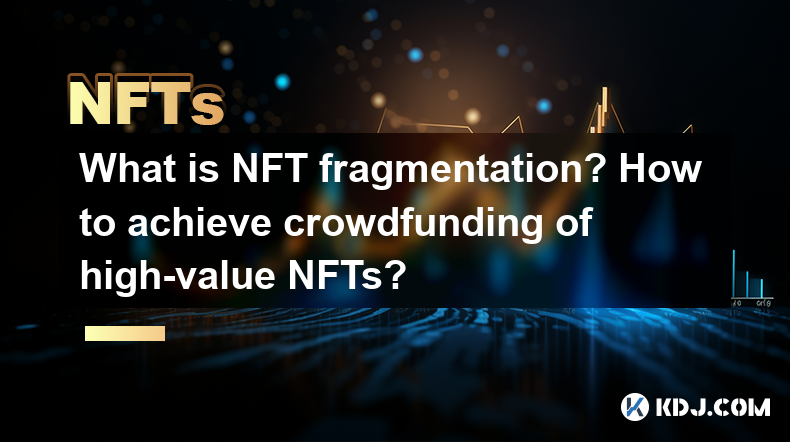
What is NFT fragmentation? How to achieve crowdfunding of high-value NFTs?
Apr 12,2025 at 12:00am
What is NFT Fragmentation? How to Achieve Crowdfunding of High-Value NFTs? NFT fragmentation is a process that allows high-value non-fungible tokens (NFTs) to be divided into smaller, more affordable pieces. This practice democratizes access to valuable digital assets, enabling more people to invest in and own parts of these NFTs. Fragmentation transfor...
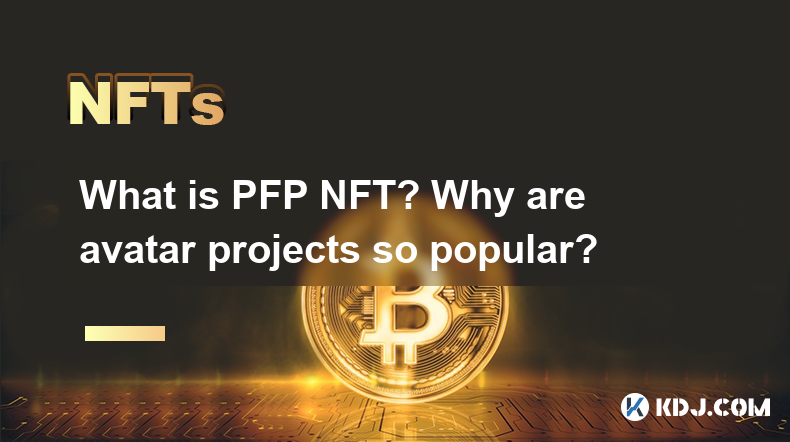
What is PFP NFT? Why are avatar projects so popular?
Apr 12,2025 at 09:22am
PFP NFTs, or Profile Picture Non-Fungible Tokens, have become a significant trend within the cryptocurrency and blockchain community. These digital assets, often in the form of unique and artistically designed images, serve as avatars for users across various social media platforms and digital communities. The rise in popularity of PFP NFTs can be attri...
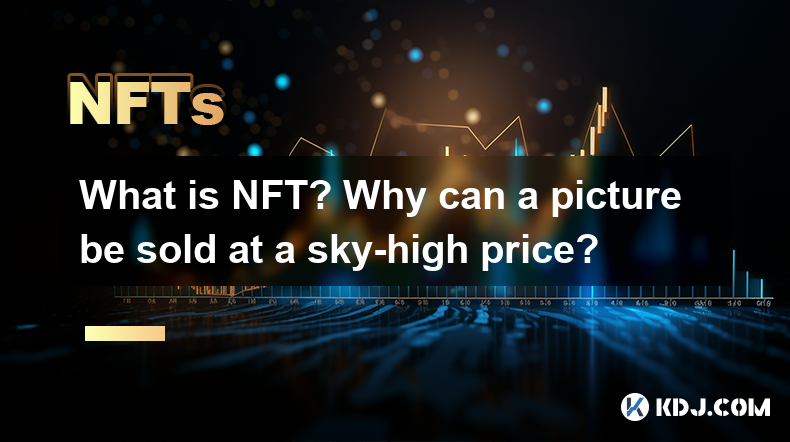
What is NFT? Why can a picture be sold at a sky-high price?
Apr 12,2025 at 05:28am
What is NFT? Why can a picture be sold at a sky-high price? Non-Fungible Tokens (NFTs) have taken the cryptocurrency world by storm, revolutionizing the way digital assets are bought, sold, and owned. But what exactly is an NFT, and why are some digital images fetching astronomical prices? Let's delve into the fascinating world of NFTs and explore the r...
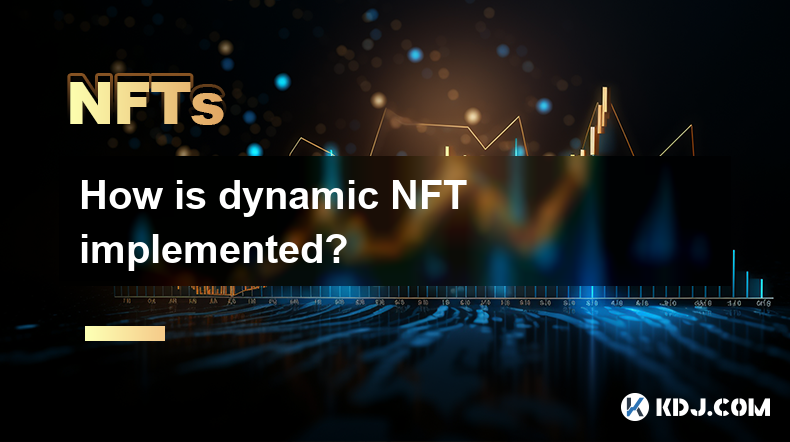
How is dynamic NFT implemented?
Apr 11,2025 at 04:56am
Dynamic NFTs, or dNFTs, represent a fascinating evolution in the world of non-fungible tokens. Unlike static NFTs, which remain unchanged once minted, dynamic NFTs can evolve, change, or update based on certain conditions or external data. This article will delve into the implementation of dynamic NFTs, exploring the technologies and processes involved ...
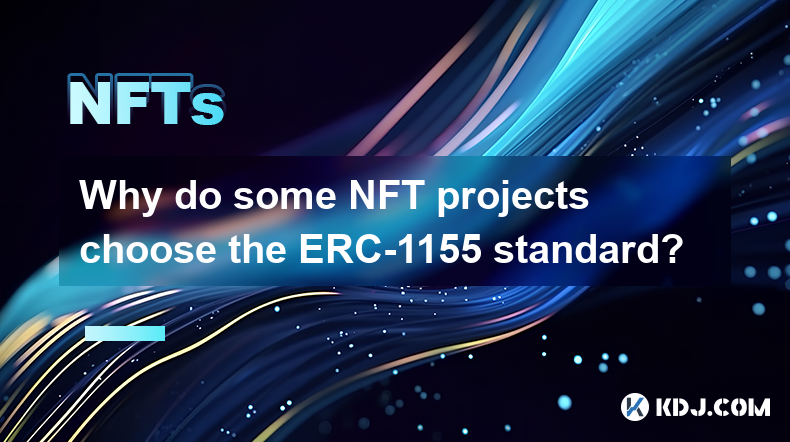
Why do some NFT projects choose the ERC-1155 standard?
Apr 08,2025 at 11:49am
The world of Non-Fungible Tokens (NFTs) has seen a significant rise in popularity and innovation, leading to the development of various token standards. Among these, the ERC-1155 standard has emerged as a versatile and efficient choice for many NFT projects. This article delves into the reasons why some NFT projects opt for the ERC-1155 standard, explor...

What is the essential difference between NFT and Bitcoin?
Apr 11,2025 at 12:14pm
The world of cryptocurrencies and digital assets has seen significant growth and diversification over the years, with Bitcoin and Non-Fungible Tokens (NFTs) being two of the most talked-about innovations. While both fall under the broader umbrella of blockchain technology, they serve different purposes and have distinct characteristics. This article wil...

What is NFT fragmentation? How to achieve crowdfunding of high-value NFTs?
Apr 12,2025 at 12:00am
What is NFT Fragmentation? How to Achieve Crowdfunding of High-Value NFTs? NFT fragmentation is a process that allows high-value non-fungible tokens (NFTs) to be divided into smaller, more affordable pieces. This practice democratizes access to valuable digital assets, enabling more people to invest in and own parts of these NFTs. Fragmentation transfor...

What is PFP NFT? Why are avatar projects so popular?
Apr 12,2025 at 09:22am
PFP NFTs, or Profile Picture Non-Fungible Tokens, have become a significant trend within the cryptocurrency and blockchain community. These digital assets, often in the form of unique and artistically designed images, serve as avatars for users across various social media platforms and digital communities. The rise in popularity of PFP NFTs can be attri...

What is NFT? Why can a picture be sold at a sky-high price?
Apr 12,2025 at 05:28am
What is NFT? Why can a picture be sold at a sky-high price? Non-Fungible Tokens (NFTs) have taken the cryptocurrency world by storm, revolutionizing the way digital assets are bought, sold, and owned. But what exactly is an NFT, and why are some digital images fetching astronomical prices? Let's delve into the fascinating world of NFTs and explore the r...

How is dynamic NFT implemented?
Apr 11,2025 at 04:56am
Dynamic NFTs, or dNFTs, represent a fascinating evolution in the world of non-fungible tokens. Unlike static NFTs, which remain unchanged once minted, dynamic NFTs can evolve, change, or update based on certain conditions or external data. This article will delve into the implementation of dynamic NFTs, exploring the technologies and processes involved ...

Why do some NFT projects choose the ERC-1155 standard?
Apr 08,2025 at 11:49am
The world of Non-Fungible Tokens (NFTs) has seen a significant rise in popularity and innovation, leading to the development of various token standards. Among these, the ERC-1155 standard has emerged as a versatile and efficient choice for many NFT projects. This article delves into the reasons why some NFT projects opt for the ERC-1155 standard, explor...

What is the essential difference between NFT and Bitcoin?
Apr 11,2025 at 12:14pm
The world of cryptocurrencies and digital assets has seen significant growth and diversification over the years, with Bitcoin and Non-Fungible Tokens (NFTs) being two of the most talked-about innovations. While both fall under the broader umbrella of blockchain technology, they serve different purposes and have distinct characteristics. This article wil...
See all articles
























































































